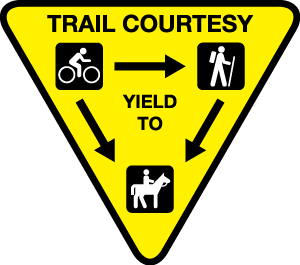 |
I’ve been interested in making mountain bike trail maps for a while now, resulting in my drawing the official River Bends and Addison Oaks maps. Stony Creek Metropark has some great trails as well, but it’s MTB trail map is unfortunately lacking. It is missing some segments used during races, has some one-way markings that don’t match what’s actually signed on the trail, and isn’t geographically accurate enough to be used for trail planning.
My original intention was to record all of the trail segments at Stony Creek myself using a GPS then draw a map similar to the ones for Addison Oaks and River Bends, but after looking on OpenStreetMap (OSM) I found that most of the trails at Stony Creek were already mapped. Thus if I am willing to license my map in an appropriately open manner I can use this data, saving myself a bunch of time.
Since a few small connectors that I wished to include were missing I headed out to Stony Creek this evening and recorded GPS data for only the missing segments. Most of these were connectors used primarily during races, but as they are passable throughout most of the year I wanted to include them. I then brought the GPX into JOSM, edited the map, and submitted the changes. This is a pretty easy task if one is familiar with basic CAD tools.
While the changes aren’t yet reflected in the main online map, the changes have been submitted and it does show when new data is manually downloaded, so I imagine it’s only a matter of time before it’s visible to the public. I will then use this OSM to make my MTB-specific map, complete with markers for things such as log piles, rock gardens, etc.
I suspect that this ease of editing is going to change my mapping workflow in the future. There’s a very good chance that any new maps which I do will first go into OSM, then this data will be pulled out to generate the actual map. Barring any license constraints, of course.
Looking further it appears that River Bends’ trails aren’t yet on OSM. Looks like I’ve got some work to do there as well…
1 Comment








